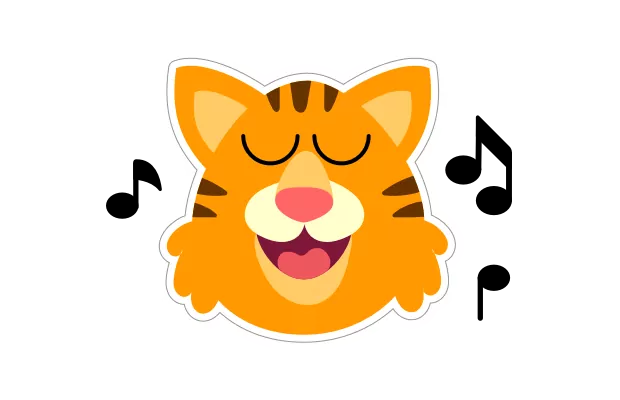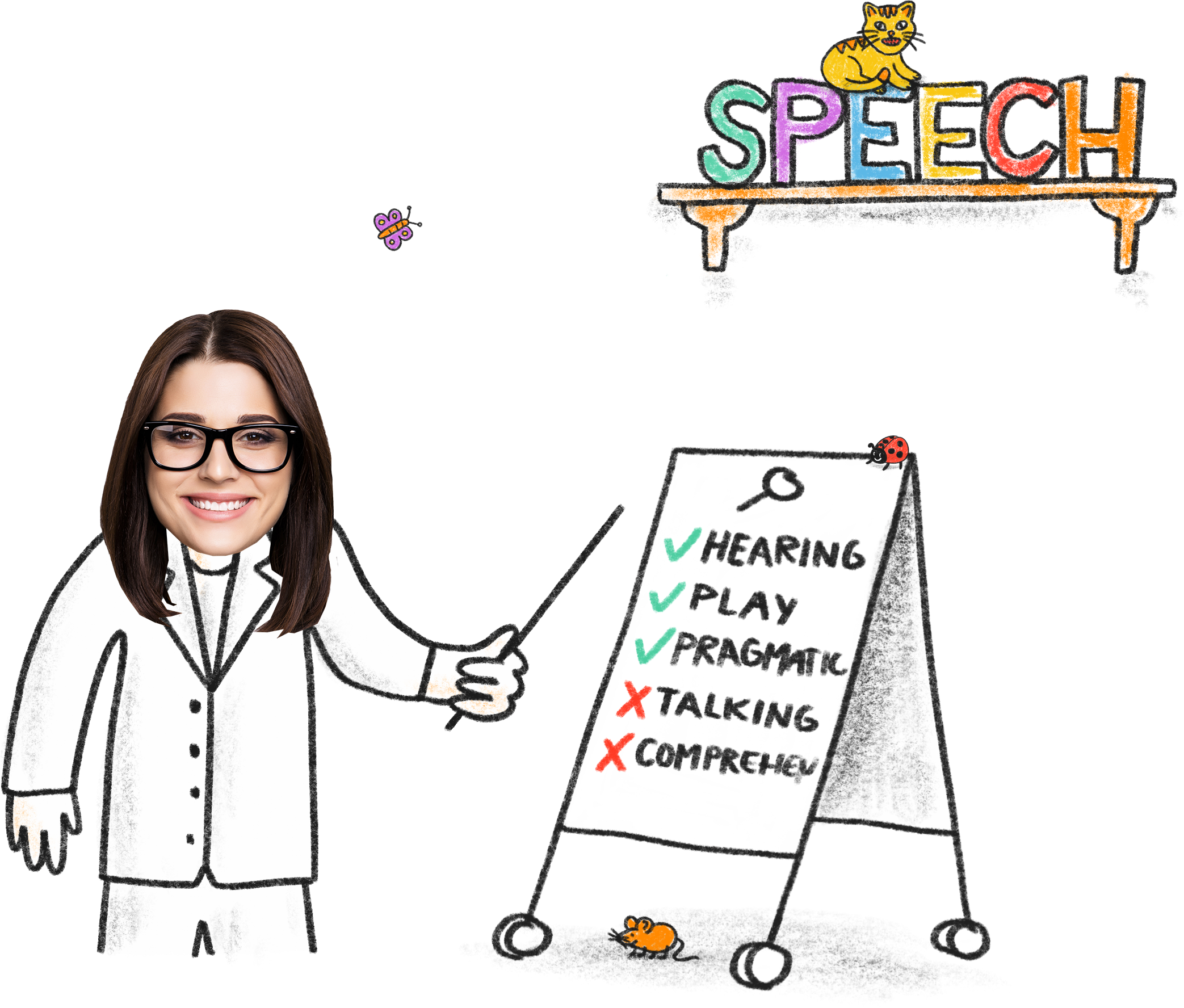Why Kids Enjoy Animal Sounds so Much?
Sep 13, 2024 “Moo,” “Woof,” “Baa,” are some of the very first sounds that we teach our children.
If you have ever watched a baby’s reaction to animal sounds like these, they will often react with a smile or a laugh. But, have you ever wondered why babies and toddlers love animal sounds and animal noises so much? Well we have – and today we’re going to share our findings with you.
In This Article
How Do Babies Progress from Imitating Sounds to First Words?
First, let’s talk about how babies progress from sounds to words. It’s important to remember that speech and sound development is a progressive process. Babies start by learning to form sounds, and then learning to form words.
Of course, babies first sound ever is to cry. Since they can’t talk when they’re born, they use crying as a way to let you know that something is wrong – they need a diaper change, they’re hungry, tired, and so forth. Crying is not a learned sound, but an instinctual one.
Just because babies can’t speak yet, doesn’t mean that they aren’t listening. From day one babies learn to associate sounds with their sources. They know the difference between mommy’s voice and daddy’s voice, and can tell that barking comes from the dog.
Pretty soon your baby will start to try to mimic your words. They won’t be successful at first, but they will be able to use their tongue, lips, and mouth to start gurgling and making “oo,” “ah,” and cooing sounds. By two months, your baby can associate different sounds with lip movements (even though they may not be able to make the sounds yet themselves).
By 4 – 6 months, the babbling stage begins. This is when your baby tries to talk, but doesn’t quite have the mouth formations down yet to form words. Then, their first words should follow shortly, and by 12 months your baby may be saying simple words like “mama” or “dada.” At the same time, they will continue imitating sounds, and as time passes they will learn to start forming more and more words.
By the end of 18 months, most babies can speak more than 10 words, and by 2 years they can start to put together simple phrases like “more milk.”
Why are Animal Sounds Important for Speech Development?
There’s actually a few different reasons that animal noises are so important for speech development. The first reason is because they are easy for children to learn.
When it comes to different sounds, the easiest consonants to pronounce are p, m, h, n, w, b, t, and d. They become even easier when paired with a vowel. When you put the two together, what do you get? Animal sounds! Baa, Moo, and so on. As well, animal sounds kids love are a great way to start working on their speech.
Once babies or toddlers can learn to make animal sounds, they can then use them as a building block for creating other words.
But animal sounds don’t just pave the way for learning new words, they also pave the way for learning sentences. By the age of 2, most toddlers can speak over 20 different words and can start to combine them together. “Cow moo” or “Dog woof” are easy combinations of words for a toddler to put together. Since toddlers are fascinated with animals, words like these will capture their attention more than that of an inanimate object like “a table.”
Why Do Kids Like Animal Noises?
The reason that babies and children love animal sounds so much is simple – because they love animals. Babies are attracted to things that move and things that make interesting noises and sounds.
Babies and toddlers learn about the world and the things around them, and it doesn’t take them long to start developing bonds with animals. As they do, the sounds that animals make become even more fascinating, and learning about them becomes even more exciting.
List of Animal Sounds Your Toddler Will Love
Get on your child’s level and start imitating some animals while looking at an animal picture book or playing with Speech Blubs app. Listen to some of our favorite animals’ sounds in nature! Can you model these sounds to your toddler?
Bear: Growl
Cat: Meow
Crow: Caw, kraa
Dog: Arf, woof, bow-wow
Elephant: Honk like a trumpet – grab your nose with one hand to mimic the elephant’s trunk.
Goose: Honk
Lion: Roar, show your claws while you do it!
Owl: Hoot
Sheep: Baaaa
You can find all the sounds from the table below in the Speech Blubs app and imitate them with the help of kid experts!
| Animal | Animal Sound |
| Bear | Growl |
| Bee | Buzz |
| Bird | Whistle, chirrup, tweet |
| Cat | Meow, purr |
| Chicken | Buck, buck, buckaw |
| Chimpanzee | Ooo-aaah: scratch your tummy and head and jump around. |
| Cow | Moo |
| Crow | Caw, kraa |
| Dinosaur | Roar |
| Dog | Arf, woof, bow-wow |
| Donkey | Hee-haw |
| Elephant | Honk like a trumpet: grab your nose with one hand to mimic the elephant’s trunk. |
| Fish | Open and close your mouth without sound. Repeat. |
| Frog | Ribbit |
| Goose | Honk |
| Horse | Neigh |
| Lion | Roar, show your claws while you do it! |
| Mouse | Squeak |
| Owl | Hoot |
| Pig | Oink or snort |
| Rooster | Cock-a-doodle-doo |
| Sheep | Baaa |
| Snake | Hiss |
| Wolf | Howl: owooooo! |
5 Activities to Teach Animal Sounds to Your Baby
1. Reading
Reading is an activity that you can do with your baby from DAY 1. Remember, just because your baby can’t speak yet doesn’t mean that they aren’t listening. Reading to your baby before bed is a great way to develop a night time routine, while at the same time helping them to learn different words and sounds.

When reading books about animals, be as expressive as you can. As a newborn, you probably won’t get much of a reaction, but as your baby continues to grow and learn you will soon see them reacting to your animal noises with smiles and laughter. By 4-6 months, you may even see your baby start to make some of the noises along with you (or at least try to).
Aim for books that are very colorful, as this will help to keep your baby’s attention.
2. Singing
Like reading, singing is something that you can do with your baby from DAY 1. Not only is singing to your baby a great way to bond with them, but it can also alter your baby’s mood to help them both eat and sleep better! It also helps your baby to learn about words, language, and communication.

And the best part about animal noises is that there are dozens of children’s songs that you can sing. “Old Macdonald,” “One Little Duck,” and similar songs are all fun to sing and a great way to progress baby’s language development. You can find some of those in the Speech Blubs app, too!
3. Search for Animals in the Real World
The best way to help babies and toddlers learn animal sounds is with real world interaction. Telling an infant that a dog says “woof” doesn’t really mean much if they don’t know what a dog is. It’s not until they actually see a dog that they can start to associate the animal with the noise.

The best way to help them associate? Go out and explore. Find a dog and practice saying “woof.” Go for a drive and find some horses that “neigh” or cows that “moo.” Babies and toddlers will learn word associations more quickly when they can actually see the animals that make the noises.
If you can, go to a local farm and learn about the animals that live there! Even better, go to the zoo!
4. Act It Out
The best way for babies, toddlers, and children to learn is through play. In fact, there’s unlimited benefits to playtime for children. Not only does play contribute to language development, but it also contributes to cognitive, physical, social, and emotional development. On top of that, it’s a great way for you to engage and bond with your children.

So the next time you want to teach your child about animal sounds, get down on your hands and knees and act it out! Roll over like a dog, let them ride on your back like a horse, or pound on your chest like a gorilla. Not only will it help your child learn animal sounds, but they’ll also find it hilarious!
5. Early Sounds in the Speech Blubs App
Another great way to help foster repetition and imitation skills in your infant or toddler is with the help of the Speech Blubs app. While there are many different sections of the app that you can use for different stages of development, the “Early Sounds” section will be most beneficial for learning animal sounds.
In the “Early Sounds” section, children that are only starting to verbalize are encouraged to imitate and generate sounds that animals, machines, dinosaurs, and other objects make. By incorporating contextually relevant videos, facts, and stories along with every word, children can start to associate different concepts with the sounds that they are learning.
The “Early Sounds” section was designed to engage children and their parents in playing with sounds. It’s an enjoyable way to interact with children while simultaneously providing the stimulation needed for developing speech production.
P.S. – If your kiddo is still not mimicking, you have nothing to worry about! Your little one’s brain is still processing information. Keep in mind that your child gets the most benefits from practicing while you are present! All you have to do is be there, laugh along, mimic the child models, and help your kid understand the ideas behind the context.
Need more animal sounds activities? Read this article:

